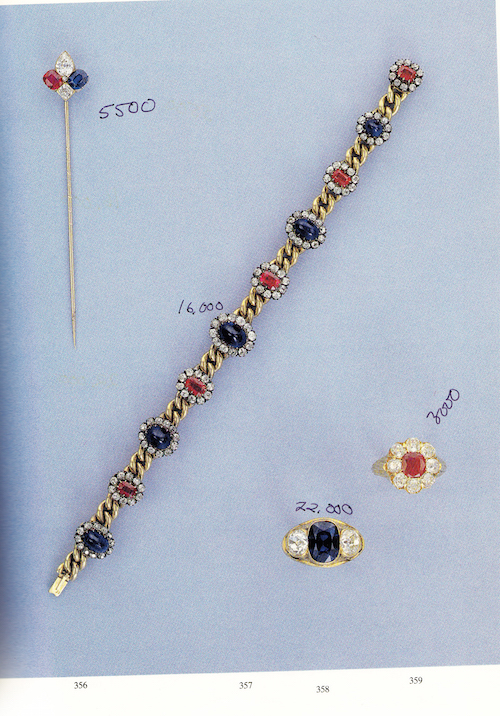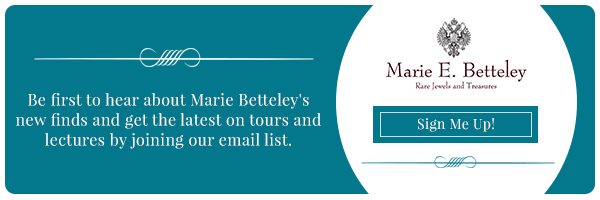
Marie’s notes on Russian jewels sold at auction
There I was gazing at the finest gems and jewels on the planet.
I had landed a plum job as gemologist at Christie’s, the world-renowned auction house in New York.
Working behind the scenes, hunched over a microscope, my role was to examine and test the world’s finest precious gems to make certain they passed muster – 20+ carat D flawless diamonds, Burmese sapphires the size of quail’s eggs, rubies to beguile maharajas and Hollywood stars – and also to spot those coveted hallmarks (Van Cleef and Arpel, Cartier, Harry Winston) that would send prices skyrocketing.
A rarefied atmosphere if ever there was one.
Yet after a while I realized that a perfect diamond is just that. It was perfect, ideal, nice, but there was not much more to say about it (yawn). Next in line?
My heart stopped when I saw them.
There in front of me was a robust gold bracelet set with the most amazing ruby and cabochon sapphires, each encircled with antique cut diamonds; then a magnificent ruby and diamond cluster ring; followed by an incredible sapphire and diamond man’s ring. Simply beyond belief in beauty.
Besides the quality of the gems, the patina of the gold and the way the stones were mounted drew me in.
They were Russian of course, and from St. Petersburg, the glittering imperial capital of the Tsars and jewelry center of the empire. And the owner of these precious jewels was none other than Dr. Thomas Witlberger Evans (1823-1897), dentist of both the French Empress Eugenie and the Russian Imperial Family.
I catalogued the lot, describing them in the usual words: carat of gold, cut of stones, length of bracelet, weight. But these descriptions did not begin to tell the story of these treasures.
Who made them? Why? And when exactly? What prompted Evans to buy them in St. Petersburg, or were they a gift from the tsar?
Questions like these raced through my mind and I discovered a new passion: Russian imperial jewelry.
Gems that quite literally changed my life.
I’m still intrigued by the questions that arise with every piece I discover – and for some items, the real story behind them may never be known.
I must say, though, that the process of finding out continues to inspire me every day, and I’m certain it will far into the future.
Find your own inspiration in this Russian ring circa 1890 and period leather presentation box – truly something to behold.
